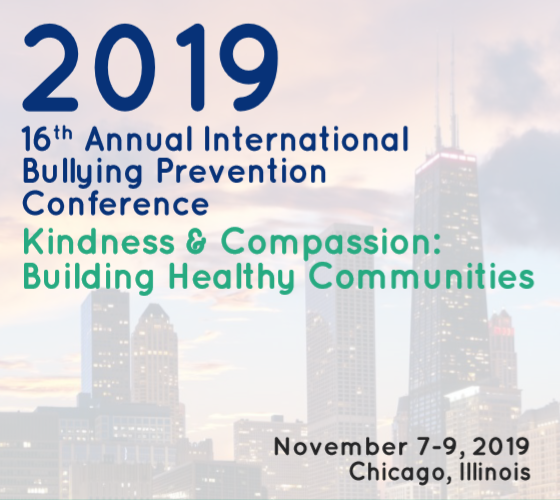Bullying Research
GENERAL RESEARCH ABOUT BULLYING
- Aggression in the Schools: Bullies and whipping boys, by D. Olweus, 1978
- Bullying among Australian school children: Reported behaviour and attitudes to victims, by K. Rigby and P.T. Slee, 1991 (Source)
- Bullying at School: What we know and what we can do, by D. Olweus, 1993
- Bullying in American schools: A social-ecological perspective on prevention and intervention, by D. Espelage and S. Swearer, 2004
- Can We Reduce Bullying by Improving Classroom Management?, by E. Roland and Galloway, 2004
- Childhood Bullying and Teasing, by D. Ross, 1996
- Children and bullying: How parents and educators can reduce bullying at school, by K. Rigby, 2008
- Classroom influences on bullying, by E. Roland and Galloway, 2002 (Source)
- Examining the social environment of middle school students who bully, by D. Espelage, K. Bosworth, and T. Simon, 2000
- Factors associated with bullying behavior in middle school students, by D. Espelage, K. Bosworth, and T. Simon, 1999
- Peer networks and bullying in schools, by C. Salmivalli, A. Huttunen, & J. Lagerspetz, 1997
- Peer processes in bullying and victimization: An observational study, by W. Craig & D. Pepler, 1995
- Safe by Design: Planning for Peaceful School Communities, by S. Miller, J. Brodine, & T. Miller
- Tackling bullying in your school: A practical handbook for teachers, by P.K. Smith & S. Sharp, 1994
- What can be done about school bullying? Linking research to educational practice, by S. Swearer, D.L. Espelage, T. Vaillancourt, S. Hymel, 2010
THE INCIDENCE AND IMPACT OF BULLYING
- Adult Health Outcomes of Childhood Bullying Victimization: Evidence from a 5-Decade Longitudinal British Birth Cohort, by R. Takizawa, B. Maughan & L. Arseneault, 2014 (Source)
- Bullying among young adolescents: The strong, the weak, and the troubled, by J. Juvonen, S. Graham, M. Schuster, 2003
- Bullying behaviors among U.S. youth: Prevalence and association with psychosocial adjustment, by T.R. Nansel, M. Overpeck, R.S. Pilla, W.J. Ruan, B. Simons-Morton & P. Scheidt, 2001
RESEARCH FOR EDUCATORS/SCHOOL COUNSELORS
- Book: The ABCs of Bullying Prevention: A Comprehensive Schoolwide Approach, by Kenneth Shore, Psy.D. (Source)
- Book: ASCA National Model: A Framework for School Counseling Programs: 3rd edition (Source)
- Book: Cyber Kids, Cyber Bullying, Cyber Balance, by Barbara C. Trolley and Constance Hanel (Source)
- Bullying in Schools: School Counselors’ Responses to Three Types of Bullying Incidents, by Kristen E. Jacobsen and Sheri Bauman, PhD, 2007 (Source)
- Empowering Students: Using Data to Transform a Bullying Prevention and Intervention Program, by Anita Young, PhD, Valerie Hardy, M.Ed, Christina Hamilton, M.Ed. Kristen Biernesser, M.S., Li-Lin Sun, M.S., Susan Niebergall, M.S., 2009
- How to Help a Bully: Recommendations for Counseling the Proactive Aggressor, by Charles R. McAdams, III, Ed.D. and Christopher D. Schmidt, Ph.D., 2007
- Identifying Victims of Bullying: Use of Counselor Interviews to Confirm Peer Nominations, by Victoria Phillips and Dewey G. Cornell, 2012
- Perceptions of Bullying and Trauma During Adolescence, by JoLynne V. Carney, PhD, 2008 (Source)
- School Counselors and the Cyberbully: Interventions and Implications, by Julia S. Chibbaro, Ph.D., 2007
- Using Problem-Based Learning with Victims of Bullying Behavior, by Kimberly R. Hall
SOCIAL SCIENCE FOR BULLYING PROFESSIONALS
- An implicit theories of personality intervention reduces adolescent aggression in response to victimization and exclusion, by D.S. Yeager, K. Trzesniewski & C.S. Dweck, 2013 (Source)
- Bullying and Cyberbullying: What Every Educator Needs to Know, by E.K. Englander, 2013
- Does high self-esteem cause better performance interpersonal success, happiness, or healthier lifestyles?, by R.F. Baumeister, J.D. Campbell, J.I. Krueger & K.D. Vohs, 2003
- Evaluating the effect of educational media exposure on aggression in early childhood, by J.M. Ostrov, D.A. Gentile & A.D. Mullins, 2013 (Source)
- Media exposure, aggression and prosocial behavior during early childhood: A longitudinal study, by J.M. Ostrov, D.A. Gentile & N.R. Crick, 2006
- Mindset: The new psychology of success, by C.S. Dweck, 2006 (Source)
- Mindsets that promote resilience: When students believe that personal characteristics can be developed, by D.S. Yeager & C.S. Dweck, 2012
- Nobody Left to Hate, by E. Aronson, 2001
- Ostracism: The Power of Silence, by K. Williams, 2002 (Source)
- Relational aggression, gender, and social-psychological adjustment, by N. Crick and J. Grotpeter, 1995 (Source)
- Relational Aggression in Early Childhood, by Crick, Ostrov, Appleyard, Jansen, and Casas (Source)
- The Belief in a Just World: A Fundamental Delusion, by M. Lerner, 198o (Source)
- The far-reaching effects of believing people can change: Implicit theories of personality shape stress, health, and achievement during adolescence, by D.S. Yeager, R. Johnson, B. Spitzer, K. Trzesniewski, J. Powers & C.S. Dweck, 2014
- The Foundations of the Resiliency Framework, by B. Benard (Source)
- Violent pride: Do people turn violent because of self-hate, or self-love?, by R.F. Baumeister, 2001
- Vulnerable but Invincible: A Longitudinal Study of Resilient Children and Youth, by E. Werner and R. Smith, 1982, 1989
- When Brute Force Fails: How to Have Less Crime and Less Punishment, by M. Kleiman, 2012
- Youth Voice Project: Student Insights into Bullying and Peer Mistreatment, by S. Davis and C.L. Nixon, 2013 (Source)
Note: We urge people to use research about negative outcomes of bullying behavior with care. Inundating youth with predictions of inevitable and severe negative outcomes can have unintended negative effects, including developing a sense of helplessness in bullied youth. In addition, fear-based messaging to youth, involving prediction of rare, severe outcomes, has been largely ineffective in many areas of prevention.
A Shift in Focus: From Adverse Childhood Experiences (ACEs) to Positive Childhood Experiences (PCEs)
Adverse Childhood Experiences Bullying was added as an Adverse Childhood Experience (ACE) by the Center for Disease Control in 2017, placing the impact of bullying behavior on par with all other ACEs. In short, these experiences have been shown to disrupt neurological development, leading to cognitive, social, and emotional impairment. This impairment may lead to […]


